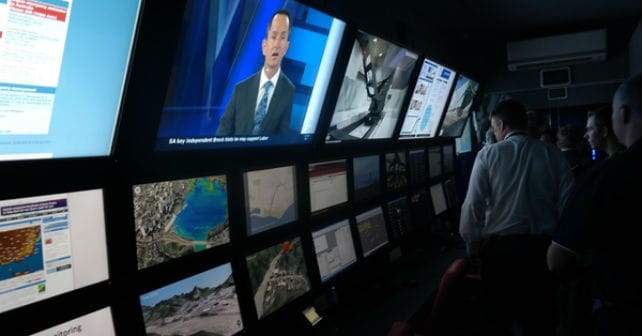Rocket anchor holds offshore oil platforms tight
 As the world’s supplies of “easy oil” run lower, oil companies are increasingly pursuing the hard-to-get stuff in deep and far-offshore locations.
As the world’s supplies of “easy oil” run lower, oil companies are increasingly pursuing the hard-to-get stuff in deep and far-offshore locations.
BP’s recently discovered Tiber field in the Gulf of Mexico, for example, lies 250 miles offshore, under more than 1,200 metres of water and 10,685 metres of seabed.
Keeping a drilling platform in place over such a well is a difficult and costly engineering feat, but a Norwegian entrepreneur says he’s developed an easier way to anchor down these installations … with the Deep Penetrating Anchor.
Looking more like a space rocket than a typical anchor, the Deep Penetrating Anchor is 13 metres long and weighs 80 tonnes. The anchor works by being lowered into the ocean, then allowed to pick up speed in a free fall so it generates enough momentum to deeply pierce the seabed, creating a sturdy grip for the platform above.
The idea is the brainchild of Jon Tore Lieng, who in the 1990s was a geotechnologist with The Foundation for Scientific and Industrial Research at the Norwegian Institute of Technology (SINTEF). It was a time when oil production had started moving toward deeper waters, and Lieng envisaged a better system for anchoring platforms than the one then being used.
At the time, drilling platforms were kept in place using box-like suction anchors that are open at the bottom and operate by pumping out the water inside. That creates a vacuum that pulls the anchor down and plants it into the seabed. That type of anchor was sensitive to high seas and waves, which often created delays costing millions a day.
Lieng thought it would be simpler to create a heavy anchor that, if moving fast enough, such would force its way into the seabed and create an extra-powerful hold.
Years in development and testing, two of Lieng’s Deep Penetrating Anchors have now been installed on StatoilHydro’s Gjøa field in the North Sea. The anchors, which were manufactured in Lithuania and have been approved by Veritas, penetrate 31 and 42 metres, respectively, into the seabed.
The new anchors are not affected by waves, and the installation process is the same whether they are being deployed at depths of 500 or 3,000 metres. Each anchor starts its descent under cable control. In the final 75 metres, though, it’s allowed to drop in free fall until it reaches a speed of 100 kilometres per hour.
A remotely operated vehicle (ROV) follows the manoeuvre and transmits the acoustic signal that releases the anchor for the final stage of the descent. Then ROV then goes down to check the situation on the seabed, and the chain is tightened up.
The approach makes for an anchor that’s solidly planted and both easier and cheaper to deploy than other types of anchoring technologies, according to Lieng.
“I believe that we can make our mark in the competition to supply mooring system, in terms of both price and robustness,” Lieng said.




